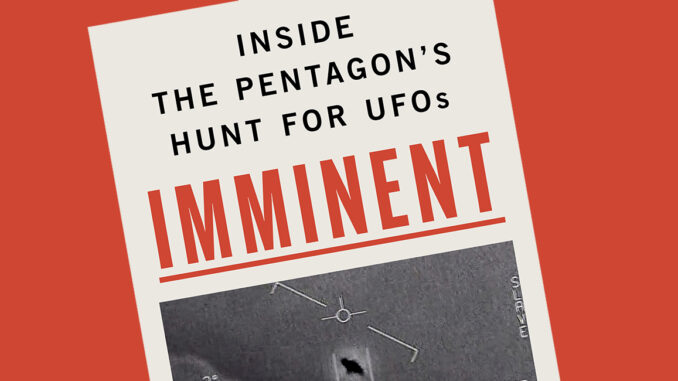
A procession of books in recent years have explored the UFO phenomenon, but only some, perhaps with the authority Luis Elizondo brings as a Defense Department insider, laboring for decades to learn who the visitors are, where they are from and what they want.
In the 275 pages of “Imminent: Inside the Pentagon’s Hunt for UFOs,” Elizondo provides evidence of what the U.S. Department of Defense knows with this somewhat surprising conclusion — Defense Department higher-ups often thwart Elizondo and his team’s efforts.
Why? Elizondo writes that the defense establishment doesn’t want to present a problem it neither can explain nor offer a solution to. But are these visitors a threat? Elizondo concludes that their capabilities make them a “very serious national security issue.”
The earliest documented UFO sightings date back to before World War II. Since then, many UFOs have violated sensitive military airspace, but no one appears to have been deliberately hurt by a UFO in the United States. However, perhaps given his combat experiences and long association with Defense Department work, Elizondo worries about another 9/11-type attack, a threat we should have anticipated but did not.
Elizondo deploys too many government acronyms — consider AAWSAAP/AATIP, for example — but he undeniably thoroughly presents what he has worked on and learned over two decades. Pages of diagrams and explanations suggest how UFOs might propel themselves.
Elizondo became so alarmed at what he was learning about UFOs that the Defense Department refused to disclose to the public. He ultimately resigned from his job with the Defense Department so he could go public with much of what he knew about the presence of visitors whose vehicles are far more advanced than what we earthlings have built. Several passages in the book are redacted, and Elizondo writes multiple times that he can only say a little about specific subjects.
Perhaps more alarmingly, as he points out, the Defense Department and other government entities at every level tend to regard our elected representatives as “temporary hires” who need to be managed and fed information as the departments see fit. The Defense bureaucracy, for example, didn’t trust President Richard Nixon, so it only told him a little about UFOs.
The Defense Department recently released more information on UFOs, thanks mainly to Elizondo and his colleagues. Still, given the reluctant government pace, the bureaucracy doesn’t appear to judge UFOs as an “imminent” threat.
In the meantime, the American people — make that the world — seem to regard the proven-beyond-reasonable-doubt arrival of visitors from far away as news eliciting little more than a shrug.
A Defense Department briefing detailing much more of what it knows might change that. A good starting point might be what happened to the remains of non-human bodies that have been recovered from crash sites.
Elizondo fears the Defense Department will never disclose what it knows about that.
